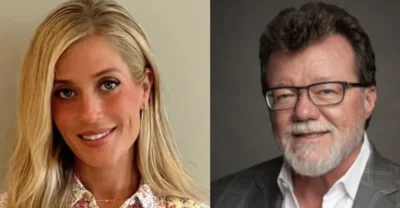Doug Truax, Everlong CEO | youtube.com
Doug Truax, Everlong CEO | youtube.com
Medical stop-loss captive insurance offers business owners alternate self-insurance medical insurance with proven employer expense, control, risk management and traditional insurance reliance.
Medical stop-loss captive insurance is self-funded excess insurance and offers protection against losses that are unpredicted or catastrophic and directly correlated to the healthcare of employees, according to CaitlinMorgan Captive Management.
"When you’re self-funded, a stop loss is a must-have," Doug Truax, founder and CEO of Everlong Captive Health Insurance said in a recent podcast. "I’ve talked about it before, big companies generally don’t have stop-loss insurance. So once you get to 8,000, 10,000, 15,000 employees in a captive cell, you know what’s going to happen, you don’t have to have all these people everywhere. So the group’s inside the cells can get to know each other, which I think is a big differentiator for us, because we have these smaller cells where they know each other, but they’re super big, big enough to make sure that they get all the leverage that they need."
Stop-loss excess rise coverage is divvied up into stop loss, also known as individual stop loss, and covers employers in the instance of a single high healthcare claim and aggregate stop loss. This puts an eligible expenses threshold on an employer who covers healthcare claims during an employee's coverage term.
Some advantages of medical stop-loss captives benefits for employers include: A reduction in the reliance on traditional insurance; a reduction in the healthcare benefits administration cost through capturing underwriting profits and spreading risks; an improvement in the control and flexibility from the risk exposure and better risk management by being upfront.
"And so, that’s all we’re doing here at the end of the day is, we’re giving people, employers control," Traux said in the podcast. "And when they get control, they get to take the profits back for themselves, and they spend a lot less money, and their employees are happier. And the decision-makers at the employers are happier, and that’s what we’re really after here."
Medical stop-loss captives are gaining traction among every niche in the work industry, according to cmcaptives.com. Most of the alternative insurance market growth stems from smaller businesses or those with less than 500 employees.
"When you’re self-funded, a stop loss is a must-have," Traux said, according to Everlong Captive. "Just like when you think about the airlines and (the) safety measures they have in place, they don’t talk about it anymore. Airlines don’t market themselves as being safer than their competitors because they all have sufficient levels of safety. This is how you need to think about the captive industry. There is sufficient safety already, it’s time to move the conversation forward. And another thing to consider is, rate caps do load up the premium. They make the whole thing more expensive. And I’ll get into (the) compensation of captive managers later, but that’s another factor in this."






 Alerts Sign-up
Alerts Sign-up